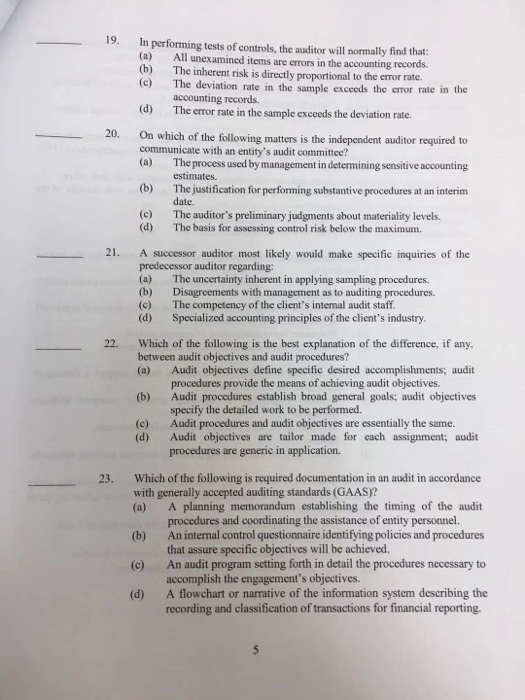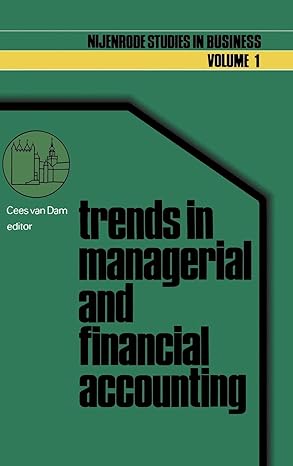19. In performing tests of controls, the auditor will normally find that: (a) All unexamined items are erors in the accounting records. (b) The inherent risk is directly proportional to the error rate. (c) The deviation rate in the sample exceeds the error rate in the accounting records. The error rate in the sample excceds the deviation rate. (d) 20. On which of the following matters is the independent auditor required to communicate with an entity's audit committee? (a) The process used by management in determining sensitive accounting estimates. The justification for performing substantive procedures at an interim date (b) (c) The auditor's preliminary judgments about materiality levels (d) The basis for assessing control risk below the maximum. 2 A successor auditor most likely would make specific inquiries of the predecessor auditor regarding: (a) The uncertainty inherent in applying sampling procedures. (b) Disagreements with management as to auditing procedures. (c) The competency of the client's intemal audit staff. (d) Specialized accounting principles of the client's industry 22. Which of the following is the best explanation of the difference, if any, between audit objectives and audit procedures? (a) Audit objectives define specific desired accomplishments; audit procedures provide the means of achieving audit objectives. Audit procedures establish broad general goals; audit objectives specify the detailed work to be performed. (b) (c) Audit procedures and audit objectives are essentially the same. (d) Audit objectives are tailor made for cach assignment; audit procedures are generic in application. 23. Which of the following is required documentation in an audit in accordance with generally accepted auditing standards (GAAS)? (a) (b) (c) (d) A planning memorandum establishing the timing of the audit procedures and coordinating the assistance of entity personnel. An internal control questionnaire identifying policies and procedures that assure specific objectives will be achieved. An audit program setting forth in detail the procedures necessary to accomplish the engagement's objectives. A flowchart or narrative of the information system describing the recording and classification of transactions for financial reporting







